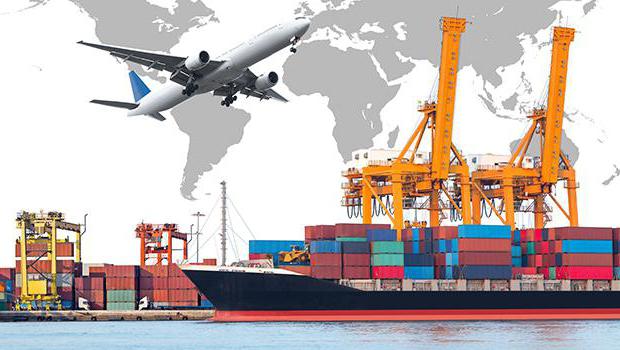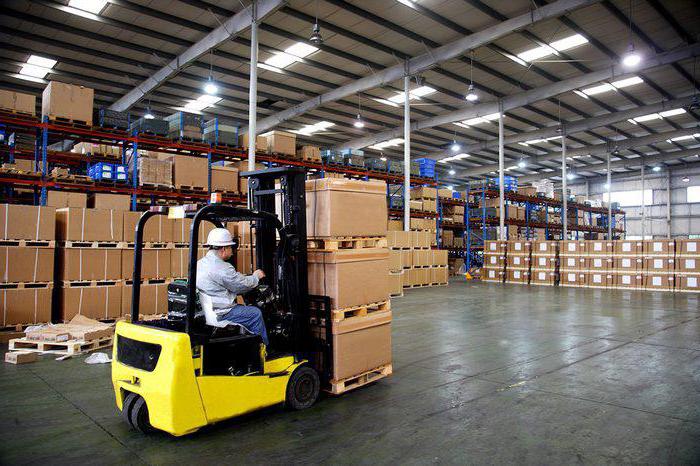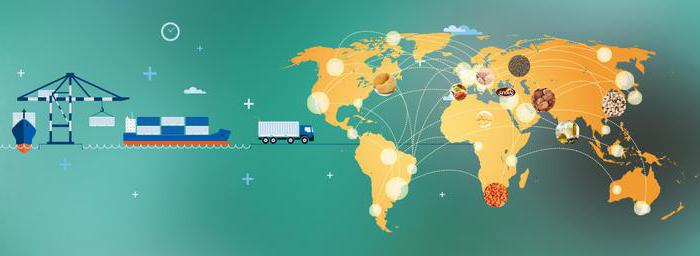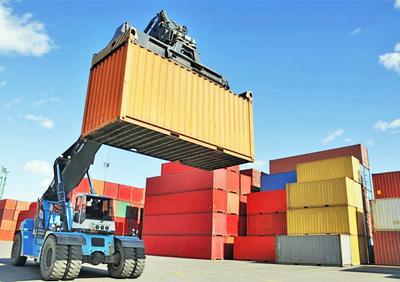Some enterprises purchase and sell products without posting them to the warehouse. This activity is called transit trade. Consider its features. 
general characteristics
Transit trade in goods includes two transactions that are independent of each other. The company draws up a sales agreement with the manufacturer, importer, etc. On its basis, the company accepts the obligation to pay for the products. The counterparty, in turn, agrees to ship the goods to the warehouse, which the company will indicate.
The second transaction is with the acquirer. It implies an obligation to deliver the goods for an agreed fee. In the first agreement, the company acts as the acquirer, and in the second - the seller. It is worth saying that precisely in the framework of civil turnover, it is becoming increasingly popular transit trade. Workflow in this area, meanwhile, has a number of features. Enterprises must clearly understand and follow the rules for filling settlement and accompanying papers.
Industry specifics
Transit Wholesale has a number of features. First of all, the company, by first agreement, transfers funds to the manufacturer (importer, etc.). The end consumer acts as rconsignee. Pickup in transit trade does not affect the essence of the transaction. This way of selling products is possible by virtue of Article 509 of the Civil Code. According to the law, delivery may be made, inter alia, by transferring to the entity specified in the agreement as the recipient.
Products in this case do not actually appear in the warehouse. In practice, it may be absent altogether, since legislation does not require its existence. Meanwhile, the company has a right of ownership of the product. In accordance with the second agreement, the buyer transfers funds for the transferred products. The sender is the supplier for the first transaction, and not, in fact, a trading company.
Important points
At transit trade supply contract upon acquisition, it will be deemed completed at the time of delivery of the product to the carrier. He, in turn, accepts the obligation to deliver products to the end consumer. Upon implementation, the obligation of the transit trading company to transfer products to the buyer will be deemed fulfilled at the time of delivery to the consumer. This is due to the fact that the sales transaction provides for the seller’s obligation to deliver the goods to the buyer.
Transfer of ownership
At transit trade supply contract should fix the specific moment of transfer of rights to products. This applies to both the first transaction and the second. A clear definition of the moment at which the ownership of the purchased product from the supplier to the trading company and from the transit company to the final consumer allows the parties to fairly distribute the risk of loss of property, correctly reflect the date of sale of the products in the statements when using the accrual method. 
rules
The ownership of the product arises at the time of its transfer. The corresponding provision is enshrined in Article 223 of the Civil Code in paragraph 1. By the transfer of products is meant their direct delivery. Transit trade does not provide for such an action. This is due to the fact that the products do not actually arrive at the warehouse.If the objects cannot be handed over to the recipient, their transfer to the first carrier for subsequent delivery to the purchaser acts as the moment of transfer. This rule is enshrined in article 224 of the Civil Code in paragraph 1.
The transfer of goods is carried out not by a trading company, but by a supplier when sending them from their warehouse. In this case, the moment of delivery may be confirmed by notification. The completed “Universal Transmissions” are attached to the notice. documents ". In transit trade the date of receipt of income may be determined by the company in different ways. It depends on the moment of transfer of ownership of the product.
Revenue recognition
When ownership rights are transferred when goods are shipped from the supplier’s warehouses, and to the final consumer when they arrive at his enterprise, the organization’s profit appears on the date of transfer of the objects upon delivery to the buyer. If the agreement stipulates that the products are provided to the purchaser for safekeeping, and he takes possession of them only after payment, the income is recognized after final settlement. It happens that the transfer of ownership to a trading company occurs when objects are shipped from the supplier’s warehouse (for example, in the presence of a company representative). In this case, immediately the products are transferred to the final consumer (pickup). In transit trade In this case, profit will appear after delivery of the products to the carrier / buyer.
Primary papers
As one of them, the invoice for f. TORG-12. In transit trade this paper is drawn up in 2 copies. The first remains at the enterprise that sells the products, the second is transferred to the acquirer. Based on the information entered in the form, posting is made. Due to the fact that transit trade involves the conclusion of two transactions, then the organization should have the same amount of securities. At the same time, the final buyer and manufacturer (importer, etc.) will have copies of different forms. The "transit" seller does not receive the goods at the warehouse, does not release it to the buyer, respectively, he will not act as the sender or receiver of the goods.
Features of filling
UPD in transit trade confirms the fact of transfer of ownership of products. Accordingly, the form issued to the buyer reflects the dispatch of products. Paperwork in transit trade carried out in accordance with established rules. According to the provisions of industry regulations, the invoice must contain mandatory details. In the form drawn up by the supplier, the lines are filled in:
- "Payer". The enterprise of the "transit" seller is indicated.
- "Supplier" and "Shipper". Provides information about the manufacturer, importer, etc.
- "Consignee ". In transit trade (for pickup or delivery by carrier) this line indicates the end user.
- "Base". Here are the details of the agreement concluded by the supplier and the transit trading company.

In the column "Vacation made" - the signature of the responsible employee is affixed. The lines “Cargo received / accepted” are not filled. A waybill drawn up in this way confirms the fulfillment of obligations to supply products to the end consumer indicated by the trading company. The paper is filled in 2 copies. The date is the day the goods are shipped to the consignee, and before it, the transit seller must transfer the invoice for the buyer to the supplier. It indicates the sale value of the product (not the price at which the product was purchased from the manufacturer (importer, etc.). This invoice must also be drawn up in 2 copies. The following lines are filled in:
- “Shipper” - information about the original supplier is entered.
- "Supplier" is a transit seller organization.
- "Payer" and "Consignee" - the name of the final buyer.
- "Basis" - details of the supply agreement concluded by the trading company and the acquirer of the products.
The line "Vacation produced" does not enter the data. In the page “Cargo accepted” the information is indicated by the representative of the carrier. It should be noted that in practice it is allowed to leave this field blank if the transport company refuses to enter information into it. The line “Cargo received” should bear the signature of the responsible employee of the buyer.
Nuances
After shipment, the supplier must transfer the original invoice to the transit seller. The final buyer, in turn, transfers to the latter his copy made in his name. As a result, the transit seller will receive both versions of the invoice, and the original supplier and the final buyer will receive a copy of the different forms. Often, participants in transactions do not meet in the performance of obligations. In such cases, "remote"paperwork. In transit trade papers are sent by courier or sent by mail.
Waybill
In addition to the universal form, it can be carried out design of TTN. In transit tradeAs a rule, a common consignment note is used. There is a special field in it, in which the details of the papers filled out depending on the type of vehicle delivering are indicated. At clearance transit trade are used:
- Transport consignment notes. They are filled upon delivery by automobile vehicles.
- Railway railway consignment notes. They are filled during transportation by rail.
- Bill of Lading It is used for shipping.
- Consignor's invoice and consignment note. They are filled when transported by aircraft.
The invoice must bear the marks of the sender and the end customer. They are necessary to confirm the fulfillment by the parties of obligations under the transaction. In addition, these data are used when applying for economic accounting of transit operations in wholesale trade. 
Form 1-T
To reflect the movement MPZ can be used, as mentioned above, TTN. In transit trade, this invoice is issued in 4 copies. The first remains with the sender. It is the supplier. His invoice is used to write off products. The 2nd, 3rd, 4th copies are certified by the seals and signatures of the sender and the driver with whom they remain. The second form is handed over to the final customer. This copy is used for capitalization of products. The 3rd and 4th forms are handed over to the company owning the transport. The third copy is used as the basis for calculations. His company, the owner of the vehicle, attaches to the invoice for transportation and sends the vehicle to the customer. In some cases, products are delivered at the expense of a trading company. In such situations, it will act as a customer and payer under a transportation agreement. The fourth copy is attached to the waybill. It is used to record the work of transport and payroll to the driver.
Posting
If the main activity of the enterprise is transit trade, then it acquires ownership of the products, regardless of their receipt at the warehouse. As indicated by the Instruction to the Chart of Accounts, posting of products is carried out on the account. 41. But since the products do not arrive at the warehouse, the use of this account is considered incorrect. Alternatively, cf. 45. The Instruction contains a recommendation on the use of this article to summarize data on the availability and movement of products, the revenue from the sale of which for some time cannot be reflected in the accounting department.
Postings
The company whose main activity is transit trade, upon acquisition and sale of products, makes the following entries:
- Db sc 41 (45) Cd. 60 - acceptance of products.
- Db sc 19 cd 60 - allocation of the amount of VAT submitted by the manufacturer (importer, etc.).
- Db sc 68, subch. "Calculations for VAT" Cd. 19 - tax deduction.
- Db sc 62 cd 90 - reflection of the debt of the buyer.
- Db sc 90, subch. 0.2 cd 41 (45) - write-off of purchase value.
- Db sc 90, subch. 90.3 cd 68 - accrual of the amount of VAT on revenue from the sale of products.
Added tax
In general cases, for the calculation of VAT by the trade organization, the date indicated in the shipping papers, that is, the day the invoice is made for the buyer, acts as the moment of determining the base for the shipped products. At the same time, the products are not transferred to the final consumer and are not delivered to the carrier. These actions are performed by the sender of the product. In this case, the date of the first compilation of the primary paper, which is filled out either for the carrier or for the buyer, should be considered as the date of shipment. For the manufacturer (importer, etc.), it will be the calendar number indicated on the invoice, which is issued to the final purchaser. 
Conditions for deduction
The relevant right arises if:
- Products purchased for resale.
- There is an invoice from the supplier.
- Products are capitalized, and there are corresponding primary papers.
The concept of "acquisition" involves the transfer of ownership of the object. Posting means that the receipt of products is reflected in the account. 41 or 45.
Invoice
The design of this document must be given special attention. The invoice must contain the following information:
- In lines 2-2b, the details of the manufacturer (importer, etc.) are indicated. Here is the address of the supplier, TIN, PPC.
- Line 3 reflects the same details.
- See page 4 for information about the end customer.
- Lines 6-6b should contain information about the trade organization, its checkpoint and TIN.
When issuing an invoice in the name of the final purchaser, the features associated with the sale of products are reflected. In the lines related to the seller, details of the transit company are indicated, in the field “Shipper” - information about the supplier (importer, manufacturer, etc.). An invoice is issued within 5 calendar days. The countdown starts from the date of shipment. The invoice is recorded in the Sales Book.
Income tax
The date of receipt of income from the sale is the day the product is sold. It is determined by the rules of article 39 of the Tax Code. According to paragraph 1 of the norm, the date is set regardless of the actual receipt of funds in payment for the product. In this regard, the income will be deemed to be received upon the transfer of ownership from the trading company to the buyer. If the organization reflects expenses and receipts using the cash method, the moment the profit occurs will be recognized as the date of receipt of funds at the cash desk or at the cash desk, transfer of material assets on account of payment, and so on. In such cases, the amounts received for previously delivered products are recognized as income, but also the buyer’s advances against future deliveries.
Costs
When selling products, the costs associated with their acquisition and sale are formed taking into account the provisions of article 320 of the Tax Code. The norm determines the procedure for the distribution of expenses among payers who use the accrual method. The costs of the current month in the trading company are divided into indirect and direct. The latter include:
- The cost of acquiring products sold in a given period.
- Transportation costs for delivering products to the buyer's warehouse, if they were not included in the purchase price.
It is necessary to pay attention to one important point. The cost of acquiring products shipped but not sold at the end of the period is not included in expenses related to production and sales until they are sold. Transportation costs related to product balances are determined by the average% for the current month. In this case, the carry-over amount of the remaining products at the beginning of the month is taken into account. All other expenses are considered indirect. 
Costs of payment for carrier services
Accounting can take these costs into account in one of the following ways:
- The cost of the carrier’s work is recognized as the cost of acquiring the products and is included in its cost. The corresponding provision is fixed by paragraph 6 of PBU 5/01.
- Costs are considered as costs associated with the acquisition of products, but are not included in their cost. They are distributed between realized objects and their balances at the end of each period according to the methodology provided for in Article 320 of the Tax Code.
- Costs are considered as costs associated with the sale of products and are included in the costs of the current month. This option is fixed in paragraph 9 of PBU 10/99.
In most cases, enterprises use the second or third accounting method. To reflect expenses, a special sub-account is opened for the 44th account. In case of partial write-offs, the costs should be distributed between the sold products and their balance at the end of the period (month). The chosen option is necessarily fixed in the financial policy of the company.
Writing notes
If the delivery agreement establishes that delivery is at the buyer's expense, then 76 accounts are used in the postings. In this case, the wiring is compiled:
- Db sc 76 cd 60 - reflects the debt for the transportation of products.
- Db sc 60 cd 51 - transfer of funds to a transport company.
- Db sc 62 cd 76 - debt to the buyer for the compensation of transport costs.
- Db sc 51 cd 62 - receipt of funds in reimbursement of transportation costs.

Specifics of taxation
According to some experts, there is some uncertainty in the conduct of transit trade in qualifying transport costs in order to calculate income tax. Within the meaning of Article 320 of the Tax Code, the direct costs include the cost of transporting purchased products to the warehouse of the payer-acquirer. If the products are shipped in transit, that is, the company pays for transportation from the supplier to the buyer without storage, delivery to the warehouse, respectively, is absent. In this regard, it is extremely risky to consider such costs as direct. After all, they are not associated with the acquisition of purchased products and their delivery to the warehouse. Such costs can be qualified as transport costs related to implementation. In this case, they can be considered as indirect costs. Such an approach would allow attributing them to the expenses of the reporting period.
According to some authors, the most acceptable option is the recognition of transport costs as expenses associated with the acquisition of products. In this case, the amount of costs is included in the price of the purchased goods. If this is not done, then the regulatory authorities may require that they be attributed to the cost of shipping products to the taxpayer’s warehouse. This option implies the need to distribute these amounts between the products sold and their balance by the average% for the current period, taking into account the carryover amount of the remaining objects at the beginning of the month.